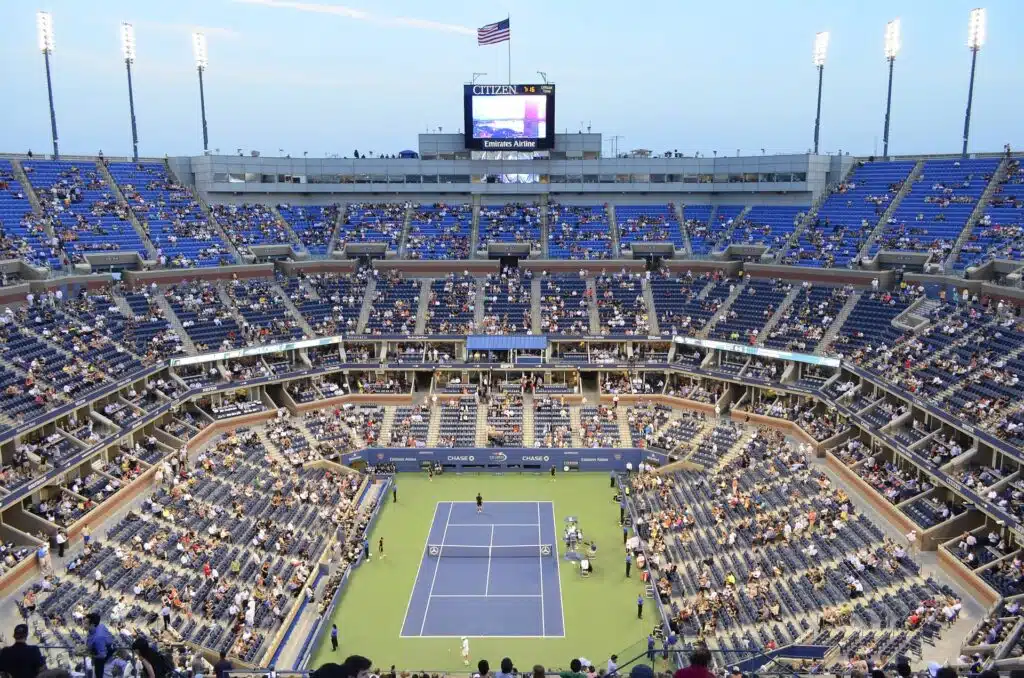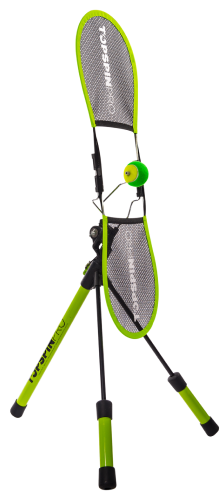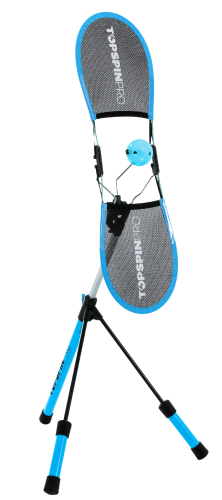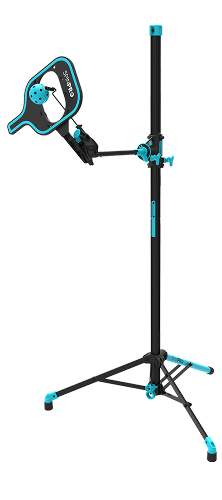 photo: pixabay.com
photo: pixabay.com
What we'll cover in this article:
Stay in the loop!
Want to be updated when we publish? Be sure to sign up for our newsletter. No spam, we promise!
Lessons From Watching The Pros
There are many lessons you can take from watching the pros play. It’s significantly cheaper than having an on-court lesson, depending on your TV provider! Rather than just seeing the score unfold, try observing and analyzing the players. What can you learn from their behaviors and playing to translate into your game? Here are some helpful areas to look out for next time you are watching a match:
Warm - Up
An area that many amateur players overlook, the ability to warm up properly with someone is crucial for both your own game and your opponent’s. If you are spraying the ball all over the place or unable to feed your opponent some volleys and overheads, they won’t be best pleased with you. Watch how the pros keep it simple and easy. It’s essential to relax here and get into a rhythm with your strokes.
Routine
All Pro players have some type of routine, some being more obvious than others. Nadal is an example of one of the more extreme. He has multiple routines, which begin before he even steps on the court all the way through to the last ball played. Routines are not there because of superstition or OCD. They are a useful mechanism to help you stay focused in the moment, stay calm, and keep some order around what could be a stressful and demanding battle. Next time you watch, look to see what different routines you can spot. Here are some simple types of routines to add to your game:
Serve - This is the most critical routine to add in if you don't already have one. Each time you step up to the line, the preparation should be the same. It can be something as simple as bouncing the ball several times or something more elaborate. This helps steady your nerves, focus you in that moment, and keep your rhythm continuous throughout the match.
Here are some routines of some top ATP players:
Return - As with the service, you should have a similar type of routine for the return. It should be something that triggers you to be ready to get that ball back and fully zoned in on the server.
Here are some example return routines:
Bag Area - You may not have a chair or independent sitting area away from your opponent. Your bag area is essential all the same. Set yourself up so your water and snacks are easily accessible, plus a spare racket in case of a string break. Having a routine and similar setup each time enables you to be prepared correctly and safe in your little area.
Behavior
The outcome of points, the momentum of the match, as well as the duration of points all affect players' behavior. There are plenty of ups and downs throughout a match. All players react differently. Personalities differ; what works for one player won't work for another. Look out for differences depending on what is happening in the game. Here are some clear behaviors you may spot:
Speed Of Play - If a point is long and taxing, the server may max out the allotted time to catch their breath. If a player notices their opponent is more winded than them, they may speed up between points.
Self Talk - The three main types of self-talk are: Positive, Negative, and Instructional. Are you spotting any of these, or are they keeping reasonably quiet?
Body Language - Does their body language match their self-talk? Recognizing body language cues can be helpful when trying to beat your opponent.
Percentage Play
The outstanding winners are the ones that tend to stick in our brains after watching a game. But what about the other 95% of points carefully constructed and built around hitting margins? Keeping the unforced error rate low is crucial to being successful in tennis. Watch how the pros keep most of their shots within a reasonable distance of the sidelines and baseline to avoid mistakes. Also, they will ensure an excellent net clearance to keep their percentages higher. This is where topspin is your best friend. Here is a drill from Phil, which was designed for practicing depth, but also is excellent for developing your topspin with good net clearance:
Technique
Try watching one player at a time and not just the ball. This is surprisingly hard to do! Every player’s technique differs, but the fundamentals are similar. Having that image ingrained in your head of how the best technique should look helps you improve your skills. A bonus of watching the pros on TV nowadays is that they often replay slow-motion points, and you can also pause, record and watch again.
Mental Toughness
Becoming a great tennis player is like being excellent at anything. It's not about being a genius or a once-in-a-generation athlete. It's about not quitting when it gets tough. The best players in the world are not the strongest, fastest, or most intelligent. They have a great combination of all those things, but most of all, they know they have to ride the storm and be mentally tough. Sometimes you'll come out on top simply because you refused to give up. Novak Djokovic is known as one of the toughest ever players mentally. Here are some of his greatest-ever comebacks:
TOPSPINPRO BEGINNER COURSES
We use the latest neuroscience in our TopspinPro Online Courses. Check them out for some in depth help with developing your shots:
Summary
Watching the pros is simply the best education you can have. It's like having a mentor to study with. They got there through 10s of 1000s of hours of practice and perseverance. Just taking a few tips from them can enormously impact our game.
So next time you watch some tennis try looking out for some of these things. Let us know in the comments below if we missed anything you want to observe. Also, share to your social pages if you think of anyone who may benefit from these tips.
FAQs
-
What are some benefits of watching professional tennis players?
Watching professional tennis players provides valuable lessons at a significantly lower cost compared to on-court lessons. By observing and analyzing their behaviors and techniques, you can translate these insights into your own game.
-
Why is warming up important, and how do pros do it?
Proper warm-up is crucial for both your game and your opponent’s. Pros keep it simple and easy, focusing on getting into a rhythm with their strokes. This helps relax and prepare both players for the match ahead.
-
How do routines help professional tennis players?
Routines help players stay focused, calm, and organized during stressful matches. For example, a consistent serve routine can help steady nerves and maintain rhythm. Observing these routines can inspire you to develop your own.
-
What behaviors should you look out for when watching pros?
Pay attention to behaviors such as speed of play, self-talk, and body language. These factors can influence the match’s momentum and offer insights into how players handle different situations.
-
How do professional players minimize unforced errors?
Pros focus on keeping their shots within reasonable margins from the sidelines and baseline to avoid mistakes. They also ensure excellent net clearance, often using topspin to maintain higher percentages and reduce errors.
Links Related to This Article
Enjoyed this article?
Be sure to sign up for our newsletter and we'll keep you up to date about new posts


